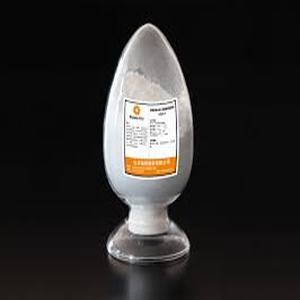发布日期:2018-05-07 浏览次数:1326
Flame-retardant ABS is made from YISHION ABS resin, with high thermal stability,
flame retardants and so on. The preparation methods of flame retardant ABS are
usually divided into two types. One is copolymerization of monomers containing
halogen elements in graft polymerization, and then the flame retardant ABS is
prepared. This method is difficult to achieve satisfactory flame retardancy because
of the limitation of the amount of fourth monomers during copolymerization. The
two is to blend the compounds or polymers containing halogen elements and other
flame retardant additives and ABS resin to make blends of flame retardant ABS,
which has been widely used in industrial production. The flame retardant is easily
decomposed, carbonized or yellowing at high temperature, so the forming temperature
should be as low as possible. It is usually set below 190 C (the resin melt temperature
is below 220 C). "Carbonization" is not bad, the flame retardancy principle can be
divided into four mechanisms: (1) isolation of oxygen and promoting polymer carbonization
to reduce flammable gas production and flame retardancy; (2) produce non flammable
gases to dilute oxygen concentration to slow combustion speed; (3) heat absorption
and release of water gas before the combustion occurs, The flame retardant effect
is achieved by lowering the temperature; (4) interfering with the formation of free
radicals by chemical means. According to the composition, the addition type flame
retardants mainly include inorganic flame retardant, halogen flame retardant
(organic chloride and organic bromide), phosphorus flame retardant, and phosphorous
compound is a promising combustible in the global halogen free combustible agent.
Organic phosphate, such as BDP and RDP, is the main phosphorus burning inhibitor
in China. The refractory carbonization layer (char) is formed on the plastic surface
after the plastics are heated, and the carbonized layer obstruct the flow of the
combustible gas and the heat radiation produced by the combustion to achieve
the purpose of flame retardancy. Since oxygen molecules are beneficial to the
formation of carbonized layers, such flame retardants are especially suitable for
oxygenated resin materials such as PET. On the one hand, the formation of
carbonized layer can prevent further pyrolysis of polymer, and on the other
hand, it can prevent its internal thermal decomposition producing organisms
into the gas phase and participate in the combustion process. UL94 is a plastic
flammability standard issued by Underwriters Laboratories. This standard classifications
plastics according to the burning of plastics with different thickness. From the
lowest (minimum flame retardancy) to the highest (maximum flame retardancy)
lassification: HB: is slowly burning on a sample placed horizontally, burning less than
76 mm/min for a material with a thickness less than 3mm; V2: stops burning
within 30 seconds of the vertically placed sample, allowing droplets to be dripped
down; V1: in vertical samples Stop burning for 30 seconds and allow to drop non
burning particles; V0: stops burning in 10 seconds on the vertically placed sample
and allows to drop non burning particles; 5VB: stops burning in 60 seconds on the
vertically placed sample, not allowed to drop, allowing holes to appear on the s
ample; 5VA: stops in a vertical sample of 60 seconds. Stop burning, do not allow
dripping, and do not allow holes in samples. It can be seen that flame retardancy
V0 > V1 > V2. The so-called V1, V2 flame retardant is not appropriate, after all,
s determined by the UL94 standard, ABS is usually added four bromo bisphenol
-A (TBBPA) as flame retardant.
Guangzhou XiJia Chemical Co.,Ltd